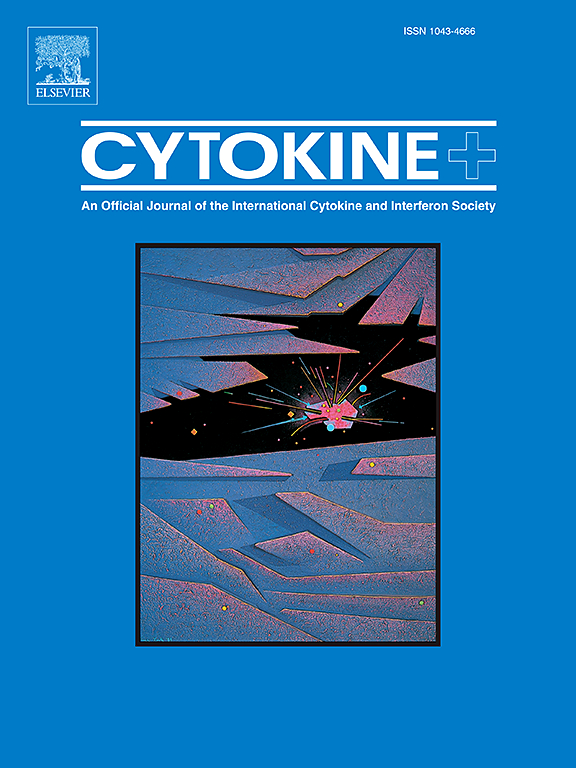Different IL-1β levels differentially mediate neuroprotection or neurodegeneration and may be related to BDNF
IF 3.7
3区 医学
Q2 BIOCHEMISTRY & MOLECULAR BIOLOGY
引用次数: 0
Abstract
Background
The detrimental and protective effects of interleukin 1β (IL-1β) have been reported. We have previously shown that the periods of IL-1β elevation is related to its dual effects. However, the effects of different IL-1β concentrations on neuropathological processes are unclear. Studies have demonstrated that mature brain-derived neurotrophic factor (mBDNF) and its precursor (proBDNF) have opposing functions in neuronal survival. We previously showed that mBDNF is involved in IL-1β-mediated neuropathology. Here, we investigated whether different IL-1β concentrations differentially affect mBDNF and proBDNF, determining their beneficial or harmful effects.
Methods
HT22 cells were cultured and exposed to various IL-1β concentrations for different durations. HT22 cell viability and the expression of mBDNF, proBDNF and their receptors were evaluated by a Cell Counting Kit-8 (CCK-8) assay and western blot.
Results
Compared with untreated cells, a significant reduction in cell viability was observed after exposure to high IL-1β concentrations for more than 24 h. Increased expression of proBDNF and its receptor p75NTR and decreased expression of mBDNF and its receptor TrkB, as well as decreased furin and PC1/3 (which promote the cleavage of proBDNF to mBDNF) expression, were detected. In contrast, low IL-1β concentrations increased cell viability, but a significant effect was observed only at an optimal concentration; in contrast to our predictions, low IL-1β concentrations did not induce significant alterations in mBDNF and proBDNF expression levels, but rather, low concentrations significantly increased the mBDNF/proBDNF ratio.
Conclusions
These results demonstrated that changes induced by low (neuroprotection) and high (neurodegeneration) IL-1β concentrations were oriented in different directions. These dual effects occur partly through the modulation of mBDNF signaling.

不同IL-1β水平介导神经保护或神经退行性变的差异,可能与BDNF有关
白细胞介素1β (IL-1β)的有害和保护作用已被报道。我们之前已经证明IL-1β升高的周期与其双重作用有关。然而,不同IL-1β浓度对神经病理过程的影响尚不清楚。研究表明,成熟脑源性神经营养因子(mBDNF)及其前体(proBDNF)在神经元存活中具有相反的功能。我们之前发现mBDNF参与il -1β介导的神经病理。在这里,我们研究了不同IL-1β浓度是否会对mBDNF和proBDNF产生不同的影响,确定它们的有益或有害作用。方法培养sht22细胞,并将其暴露于不同浓度的IL-1β中。采用细胞计数试剂盒-8 (CCK-8)法和western blot检测HT22细胞活力及mBDNF、proBDNF及其受体的表达。结果与未处理的细胞相比,高IL-1β暴露24 h后,细胞活力显著降低,proBDNF及其受体p75NTR表达升高,mBDNF及其受体TrkB表达降低,furin和PC1/3(促进proBDNF裂解为mBDNF)表达降低。相比之下,低IL-1β浓度可提高细胞活力,但只有在最佳浓度时才有显著效果;与我们的预测相反,低IL-1β浓度并没有引起mBDNF和proBDNF表达水平的显著改变,相反,低浓度显著增加了mBDNF/proBDNF的比值。结论IL-1β低浓度(神经保护)和高浓度(神经退行性)诱导的变化方向不同。这些双重作用部分通过mBDNF信号的调节发生。
本文章由计算机程序翻译,如有差异,请以英文原文为准。
求助全文
约1分钟内获得全文
求助全文
来源期刊

Cytokine
医学-免疫学
CiteScore
7.60
自引率
2.60%
发文量
262
审稿时长
48 days
期刊介绍:
The journal Cytokine has an open access mirror journal Cytokine: X, sharing the same aims and scope, editorial team, submission system and rigorous peer review.
* Devoted exclusively to the study of the molecular biology, genetics, biochemistry, immunology, genome-wide association studies, pathobiology, diagnostic and clinical applications of all known interleukins, hematopoietic factors, growth factors, cytotoxins, interferons, new cytokines, and chemokines, Cytokine provides comprehensive coverage of cytokines and their mechanisms of actions, 12 times a year by publishing original high quality refereed scientific papers from prominent investigators in both the academic and industrial sectors.
We will publish 3 major types of manuscripts:
1) Original manuscripts describing research results.
2) Basic and clinical reviews describing cytokine actions and regulation.
3) Short commentaries/perspectives on recently published aspects of cytokines, pathogenesis and clinical results.
 求助内容:
求助内容: 应助结果提醒方式:
应助结果提醒方式:


